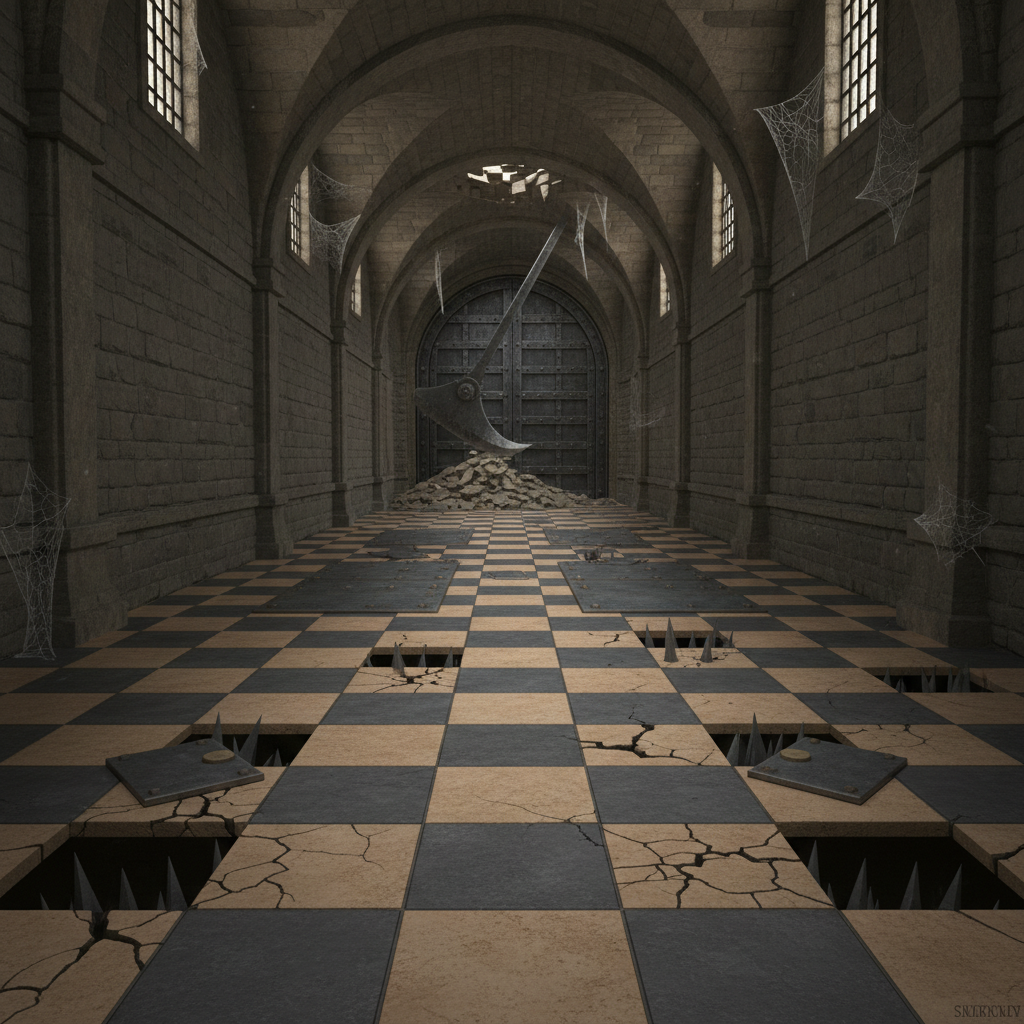Learning Python with Advent of Code Walkthroughs
Dazbo's Advent of Code solutions, written in Python

Advent of Code 2016 - Day 18
Useful Links
Concepts and Packages Demonstrated
Problem Intro
We’re in a room with a tiled floor, where some tiles are safe (.) and some are traps (^). The layout of traps in each row is determined by the tiles in the previous row. Specifically, a tile’s type depends on the three tiles above it: the one directly above (center), and the ones to the left and right.
A new tile is a trap if:
- Its left and center tiles are traps, but its right tile is not.
- Its center and right tiles are traps, but its left tile is not.
- Only its left tile is a trap.
- Only its right tile is a trap.
In any other case, the new tile is safe. Tiles outside the bounds of the row are considered safe.
Our input is the first row of tiles, for example: ..^^.
Part 1
Starting with the map in your puzzle input, in a total of 40 rows (including the starting row), how many safe tiles are there?
This is a simulation problem. We need to generate each new row based on the previous one, and count the safe tiles.
My approach is:
- Create a function
is_trap(position, last_row)that determines if a tile at a givenpositionin the new row should be a trap, based on thelast_row. This function will implement the four rules described in the problem. - Start with the initial row from the input.
- Iterate to generate the required number of rows. In each iteration, create the new row by applying the
is_trapfunction to each tile position. - As each row is generated, count the number of safe tiles and add it to a running total.
Here’s the is_trap function:
def is_trap(position: int, last_row):
"""
Position is TRAP if:
- L and C are traps AND R is safe.
- C and R are traps AND L is safe.
- L is trap; C and R are safe.
- R is trap; C and L are safe.
"""
tile_l = SAFE if position == 0 else last_row[position-1]
tile_r = SAFE if position == len(last_row) - 1 else last_row[position+1]
tile_c = last_row[position]
if tile_l == TRAP and tile_c == TRAP and tile_r == SAFE:
return True
if tile_r == TRAP and tile_c == TRAP and tile_l == SAFE:
return True
if tile_l == TRAP and tile_c == SAFE and tile_r == SAFE:
return True
if tile_r == TRAP and tile_c == SAFE and tile_l == SAFE:
return True
return False
And the main loop to generate rows and count safe tiles:
def main():
# ... (read input) ...
rows: list[str] = []
rows.append(data) # add first row
for row_num in range(1, ROWS):
last_row = rows[row_num-1]
row_data = []
for tile_posn in range(row_width):
row_data.append(TRAP) if is_trap(tile_posn, last_row) else row_data.append(SAFE)
rows.append("".join(row_data))
safe_count = sum(row.count(SAFE) for row in rows)
logging.info(f"Safe tiles count: {safe_count}")
I’m using a list comprehension with sum() to get the total count of safe tiles across all rows.
Part 2
How many safe tiles are there in a total of 400,000 rows?
The logic for Part 2 is exactly the same as for Part 1. The only difference is the number of rows to generate. My code is already set up to handle a variable number of rows, so I just need to change the ROWS constant from 40 to 400,000.
Results
Here’s the output from my solution for 40 rows:
Safe tiles count: 1956
Execution time: 0.0010 seconds
And for 400,000 rows:
Safe tiles count: 19995121
Execution time: 2.5 seconds
The solution is efficient enough to handle the large number of rows in a reasonable time.